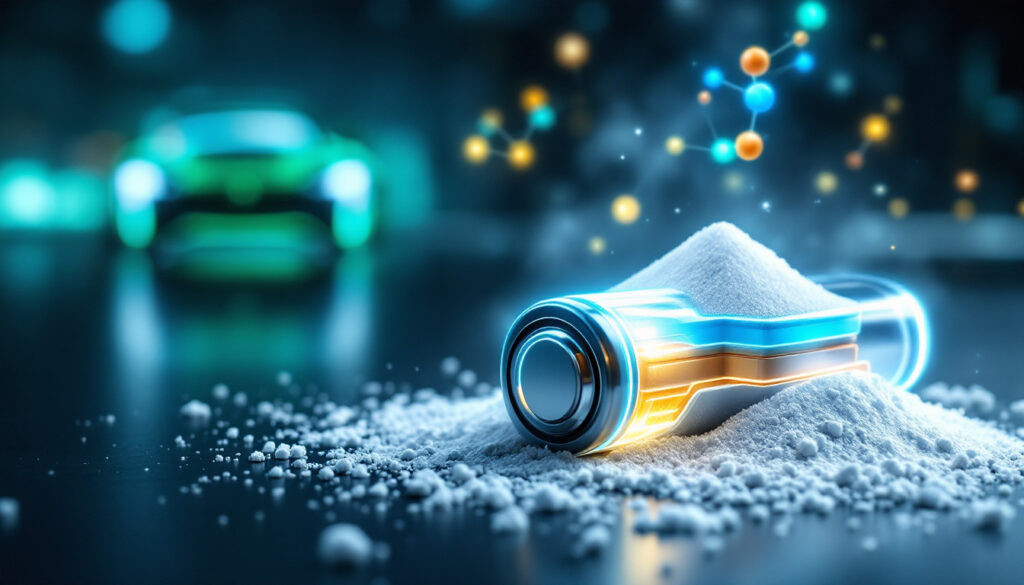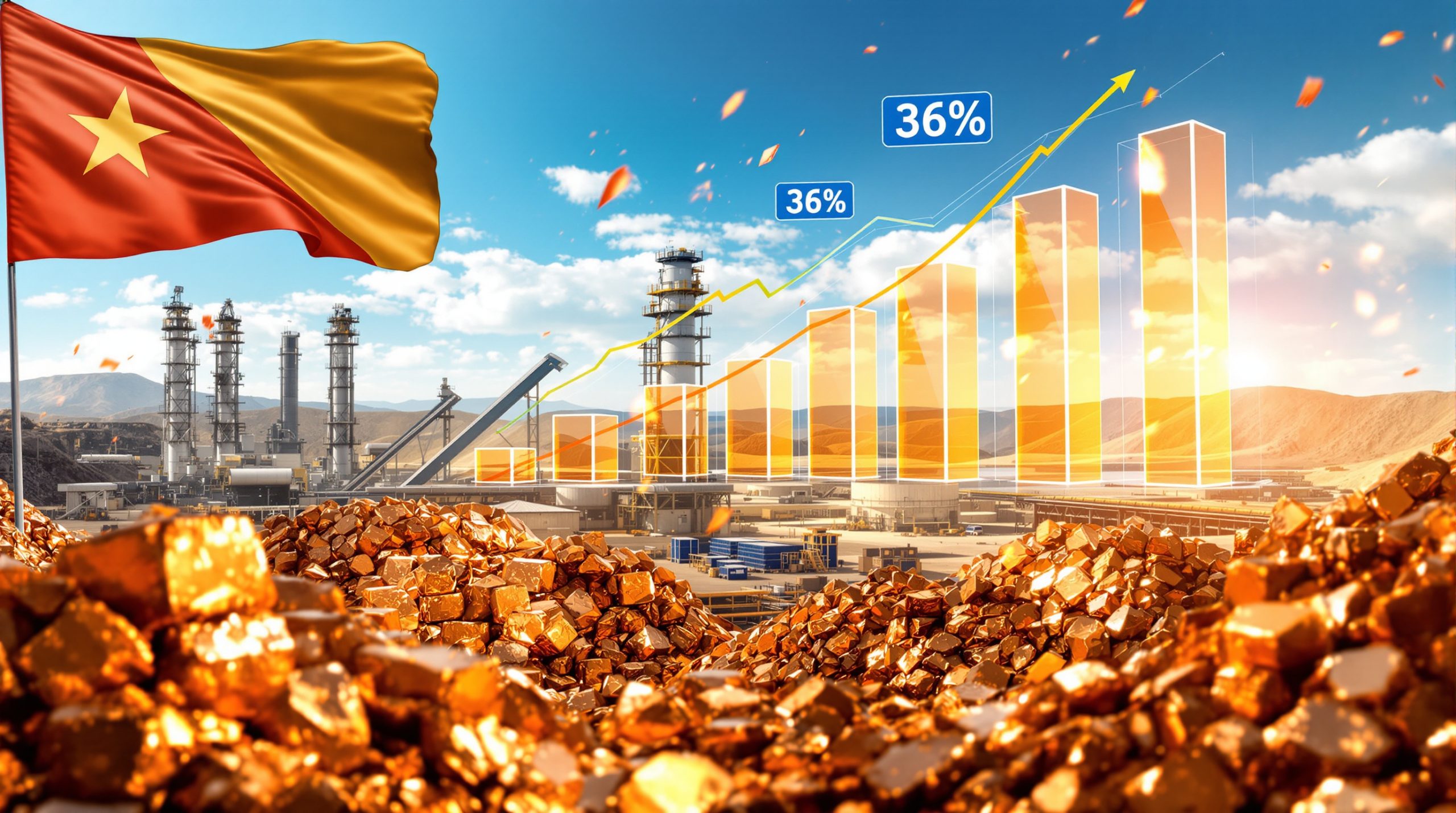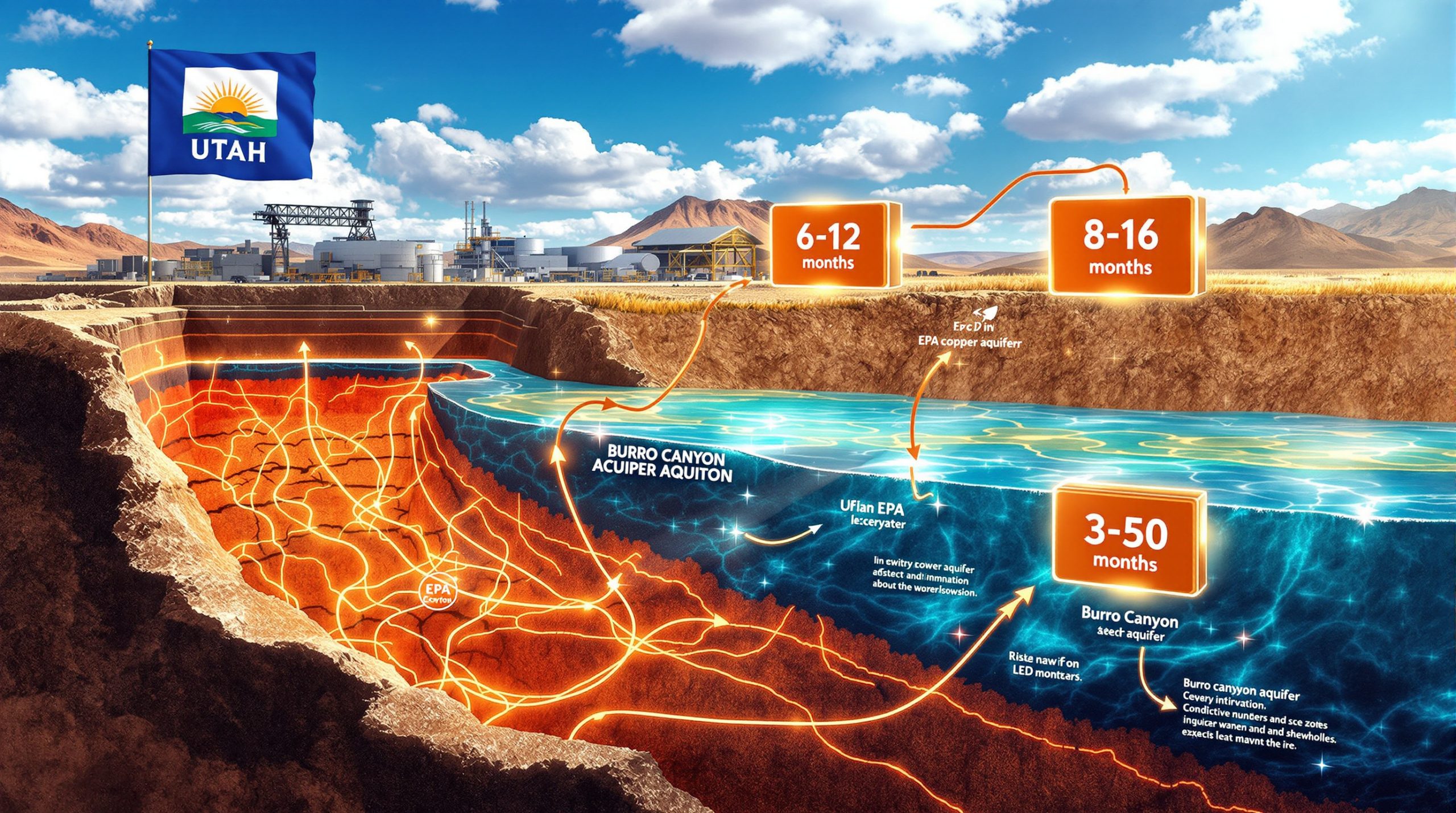What is Lithium Hydroxide and Why is it Important?
Lithium hydroxide (LiOH) serves as a critical component in modern energy storage technologies, particularly in the rapidly expanding electric vehicle market. This inorganic compound exists in both anhydrous and hydrated forms, appearing as a white hygroscopic solid that readily absorbs moisture from the air. While lithium hydroxide dissolves easily in water and to a lesser extent in ethanol, its classification within the chemistry world holds a unique distinction—despite being a strong base, it's actually the weakest known alkali metal hydroxide.
The growing strategic importance of lithium hydroxide stems primarily from its crucial role in manufacturing high-performance cathode materials for lithium-ion batteries. These materials directly impact the range, charging speed, and longevity of electric vehicles, making lithium hydroxide an essential component in the global transition to sustainable transportation.
Chemical Properties of Lithium Hydroxide
Lithium hydroxide possesses several distinctive chemical characteristics that make it valuable for industrial applications:
- Chemical formula: LiOH (anhydrous) or LiOH·H₂O (monohydrate)
- Molar mass: 23.95 g/mol (anhydrous), 41.96 g/mol (monohydrate)
- Density: 1.46 g/cm³ (anhydrous), 1.51 g/cm³ (monohydrate)
- Melting point: 462°C (864°F)
- Water solubility: 12.8 g per 100 mL at 20°C (anhydrous)
The hygroscopic nature of lithium hydroxide enhances its reactivity during battery synthesis processes, while its relatively stable thermal properties allow for consistent performance in manufacturing applications. Unlike other alkali metal hydroxides, lithium hydroxide's moderate reactivity makes it safer to handle with proper precautions, though it still requires careful management in industrial settings.
How is Lithium Hydroxide Produced?
The production of battery-grade lithium hydroxide involves sophisticated industrial processes that have evolved significantly in recent years. Hard-rock spodumene has emerged as the preferred feedstock for lithium hydroxide production due to its high lithium oxide content and the directness of the conversion process.
Lithium Carbonate Conversion Method
The most common production pathway involves a metathesis reaction between lithium carbonate and calcium hydroxide:
Li₂CO₃ + Ca(OH)₂ → 2 LiOH + CaCO₃
In this process, lithium carbonate reacts with calcium hydroxide to produce lithium hydroxide and calcium carbonate as a byproduct. The initially formed hydrate is subsequently dehydrated by heating under vacuum conditions at temperatures up to 180°C to create anhydrous lithium hydroxide. This method requires precise temperature control and filtration techniques to achieve the high purity levels needed for battery applications.
Lithium Sulfate Route
An alternative production method involves a more complex sequence of chemical transformations:
- Converting α-spodumene to β-spodumene through heat treatment at approximately 1100°C
- Reacting β-spodumene with calcium oxide to produce lithium oxide
- Converting lithium oxide to lithium sulfate using calculated amounts of sulfuric acid
- Reacting lithium sulfate with sodium hydroxide to produce lithium hydroxide
This process, while more energy-intensive in its initial stages, offers significant advantages through the production of valuable by-products. The resulting gypsum and sodium sulfate have established market value in construction materials and detergent manufacturing respectively, improving the overall economics of this production route.
The energy consumption profile between these methods varies considerably, with the sulfate route requiring more thermal energy during the spodumene conversion phase but potentially offering better overall efficiency when by-product value is considered.
Why is Lithium Hydroxide Preferred for EV Batteries?
Advantages in Cathode Production
Lithium hydroxide has established itself as the preferred precursor for manufacturing high-nickel cathode materials that power premium electric vehicles. This preference stems from several critical factors that directly impact battery performance:
- Enables production of high-energy-density cathode materials that increase driving range
- Requires significantly lower reaction temperatures than lithium carbonate (600-700°C vs. 800-900°C)
- Results in fewer impurities in the final cathode product, enhancing electrochemical performance
- Produces cathodes with better thermal stability and longer cycle life under real-world conditions
- Essential for nickel-rich NMC (lithium nickel manganese cobalt oxide) formulations like NMC811
High-nickel cathodes manufactured using lithium hydroxide can achieve specific capacities approaching 220 mAh/g, substantially higher than earlier cathode formulations. This translates directly to extended driving range—a critical selling point for electric vehicle manufacturers competing in an increasingly crowded market.
Comparison with Lithium Carbonate
The technical differences between lithium hydroxide and lithium carbonate have significant implications for battery performance and manufacturing costs:
| Property | Lithium Hydroxide | Lithium Carbonate |
|---|---|---|
| Processing temperature | Lower (~600-700°C) | Higher (~800-900°C) |
| Suitability for high-nickel cathodes | Excellent | Limited |
| Energy density of resulting batteries | Higher | Lower |
| Price per kg (2021) | ~$11.50 | ~$9.00 |
| Production complexity | Higher | Lower |
| Market growth rate | Faster | Slower |
The price differential between lithium hydroxide and lithium carbonate has fluctuated considerably, with hydroxide commanding a significant premium during periods of high demand. In 2022, prices peaked at approximately $78/kg before moderating, demonstrating the market's sensitivity to electric vehicle production forecasts and lithium market challenges.
Despite the higher cost, lithium hydroxide's ability to produce batteries with superior performance characteristics makes it the material of choice for premium electric vehicles where range and charging performance are paramount considerations.
Lithium Hydroxide in Battery Manufacturing
Role in Cathode Material Production
Lithium hydroxide plays an essential role in the production of various cathode materials that power different types of lithium-ion batteries:
- Lithium Cobalt Oxide (LiCoO₂): The original cathode chemistry still widely used in consumer electronics batteries due to its stability and established manufacturing processes
- Lithium Nickel Manganese Cobalt Oxide (NMC): Dominates approximately 60% of the EV market, with newer high-nickel formulations (NMC811) requiring lithium hydroxide
- Lithium Iron Phosphate (LiFePO₄): Used in energy storage and some EVs prioritizing safety and longevity over maximum energy density
- Lithium Nickel Cobalt Aluminum Oxide (NCA): Used predominantly in Tesla vehicles, requiring lithium hydroxide for optimal performance
Each of these cathode materials requires precisely controlled synthesis conditions, with lithium hydroxide's chemical properties facilitating the formation of crystalline structures with optimal lithium ion pathways.
Manufacturing Process
The industrial production of cathode materials using lithium hydroxide typically follows a multi-stage process:
- Mixing lithium hydroxide with metal precursors (nickel, manganese, cobalt salts) in precise stoichiometric ratios
- Co-precipitation to form a uniform mixture, ensuring homogeneous metal distribution throughout the precursor
- Calcination at controlled temperatures (typically 700-900°C) for 10-15 hours to form the crystalline cathode structure
- Cooling and processing into battery-grade cathode material through grinding and classification
- Integration into lithium-ion battery cells via electrode coating and assembly processes
Recent advancements in manufacturing technology have focused on developing single-crystal NMC particles that offer superior performance during fast charging and extended cycling. These advanced lithium production materials rely on lithium hydroxide's unique chemical properties during the synthesis process to achieve their superior microstructure.
Global Production and Market Trends
Major Producers
The global landscape of lithium hydroxide production is dominated by a handful of major players with significant production capacity:
- Ganfeng Lithium: ~25,000 tonnes/year as of 2020, with expansion plans targeting 85,000 tonnes of annual capacity
- Albemarle: ~25,000 tonnes/year, developing additional capacity through Western Australia operations
- Tianqi Lithium: 48,000 tonnes/year capacity at its Kwinana plant, though actual production has faced technical challenges
- Livent Corporation (FMC): Significant production capacity focused on high-purity battery-grade material
- SQM: Major producer with expansion plans leveraging Chilean lithium resources
The geographic distribution of lithium hydroxide production has shifted significantly, with China's Jiangxi province emerging as a major production hub alongside Australia's lithium ambitions. This diversification has important implications for supply chain security in the battery industry.
Market Growth and Price Trends
The price trajectory of lithium hydroxide reflects the dramatic growth in demand from electric vehicle manufacturers:
- 2012: US$5-6/kg
- December 2020: US$9/kg
- March 2021: US$11.50/kg
- Peak in 2022: US$78/kg during supply constraints
- 2023: Moderation to US$15-25/kg range amid increased production capacity
BloombergNEF projects a 300% increase in lithium hydroxide demand by 2030, driven by electric vehicle sales growth approaching 30 million vehicles annually. This exponential growth trajectory has spurred massive investment in new production capacity, though challenges remain in bringing sufficient high-quality material to market.
Indonesia's expanding role in the battery supply chain, particularly its restrictions on nickel exports to encourage domestic processing, has created additional complexity in the market for battery materials including lithium hydroxide.
How Does Lithium Hydroxide Improve Battery Performance?
Impact on Energy Density
Lithium hydroxide enables the production of cathode materials with higher nickel content, which delivers several tangible benefits for electric vehicle batteries:
- Higher energy density, with NMC811 cathodes achieving approximately 250 Wh/kg at the cell level
- Extended driving range for electric vehicles—approximately 20-30% improvement over earlier cathode formulations
- Reduced battery weight for the same energy capacity, improving overall vehicle efficiency
- Better overall performance in high-drain applications such as performance EVs and power tools
The ability to maximize nickel content while minimizing cobalt usage not only improves performance but also addresses critical supply chain concerns, as cobalt faces significant ethical and availability challenges.
Effect on Battery Lifespan
Cathodes produced using lithium hydroxide demonstrate superior longevity characteristics:
- Improved cycle stability with many high-nickel cathodes maintaining 80% capacity after 2,000+ charge/discharge cycles
- Better thermal performance under high-load conditions, reducing degradation during fast charging
- Reduced capacity fade over the battery's lifetime, extending useful service before replacement
- Enhanced safety characteristics, particularly important for large-format automotive battery packs
Lithium hydroxide-based cathode materials also demonstrate higher threshold temperatures for thermal runaway events—approximately 15-25°C higher than equivalent lithium carbonate-based materials. This provides critical additional safety margins for electric vehicle batteries under extreme conditions.
Other Applications of Lithium Hydroxide
While battery production dominates the market for lithium hydroxide, several other significant applications leverage its unique chemical properties:
Carbon Dioxide Scrubbing
Lithium hydroxide serves a critical role in closed environmental systems where carbon dioxide removal is essential:
- Spacecraft life support systems, including those used on the International Space Station
- Submarines requiring long-duration submersion capabilities
- Rebreathers for specialized diving operations
The carbon dioxide removal occurs through a straightforward chemical reaction:
2 LiOH + CO₂ → Li₂CO₃ + H₂O
One gram of anhydrous lithium hydroxide can remove approximately 450 cm³ of carbon dioxide gas, making it remarkably efficient for weight-constrained applications like spaceflight. This efficiency explains NASA's continued reliance on lithium hydroxide for high-capacity batteries and emergency CO₂ scrubbing systems.
Industrial Applications
Beyond batteries and air purification, lithium hydroxide finds application in diverse industrial contexts:
- Lubricating greases: Lithium 12-hydroxystearate serves as a thickener in high-performance greases that account for approximately 75% of the global lubricant market
- Ceramics: Used in specialty ceramic formulations to modify melting temperatures and final properties
- Portland cement: Helps suppress alkali-silica reaction, often called "concrete cancer," which can damage structures
- Nuclear applications: Isotopically enriched lithium-7 hydroxide is added to the primary coolant circuit in pressurized water reactors for pH control and corrosion prevention
The nuclear application is particularly noteworthy, as lithium-7 hydroxide plays an essential role in maintaining the structural integrity of reactor cooling systems. The U.S. Government Accountability Office (GAO) has highlighted the strategic importance of maintaining secure supply chains for this specialized material.
Future Outlook for Lithium Hydroxide in Battery Technology
Projected Demand Growth
The demand for lithium hydroxide is expected to increase dramatically in coming years, driven by several converging factors:
- Accelerating electric vehicle adoption globally, with projections of 30 million EVs annually by 2030
- Expansion of grid-scale energy storage systems supporting renewable energy integration
- Growing consumer electronics market with increasing battery capacity requirements
- Emerging applications in aerospace and military sectors requiring high-energy-density power sources
Recycling technologies are developing rapidly, with advanced hydrometallurgical processes demonstrating up to 95% efficiency in recovering lithium compounds from spent batteries. By 2035, recycling could potentially supply approximately 10% of lithium hydroxide demand, creating a more circular materials economy.
Technological Developments
Research and development in lithium hydroxide applications continues along several promising avenues:
- More efficient production methods with lower environmental impact, including direct lithium extraction (DLE) technologies that reduce water usage by approximately 50% compared to traditional evaporation ponds
- Advanced cathode formulations requiring higher-purity lithium hydroxide with reduced impurity profiles
- Solid-state battery technologies exploring the use of lithium hydroxide in ceramic electrolyte synthesis
- Recycling processes integrating directly into battery manufacturing to recover lithium hydroxide from production scrap
The European Union's Critical Raw Materials Act has significant implications for lithium hydroxide sourcing, potentially accelerating development of European production capacity to reduce dependency on imports from China and other regions.
FAQ: Lithium Hydroxide in Batteries
How does lithium hydroxide differ from lithium carbonate in battery applications?
Lithium hydroxide enables the production of higher-nickel cathode materials that provide greater energy density and longer driving ranges for electric vehicles. It requires lower processing temperatures (600-700°C versus 800-900°C) and produces fewer impurities in the final cathode material compared to lithium carbonate. This results in batteries with superior performance characteristics, particularly for premium electric vehicles where maximum range is a priority.
Why is the price of lithium hydroxide increasing?
The price has experienced significant volatility, rising from approximately $5-6/kg in 2012 to a peak of $78/kg in 2022 before moderating. This dramatic price movement reflects surging demand from electric vehicle manufacturers, periodic supply chain constraints, and the specialized nature of high-purity battery-grade lithium hydroxide production. As new production capacity comes online, prices have moderated but remain substantially higher than historical norms.
What are the environmental considerations of lithium hydroxide production?
Production involves chemical processing that requires careful waste management. The industry is working toward more sustainable production methods, including water recycling, reduced chemical usage, and exploration of direct lithium extraction technologies that have lower environmental footprints. DLE methods can reduce water consumption by approximately 50% compared to traditional evaporation pond techniques, addressing a key environmental concern in regions where water scarcity is an issue.
How is the lithium hydroxide market expected to evolve?
The market is projected to grow significantly as electric vehicle production increases globally. Major producers are expanding capacity, with companies like Ganfeng Lithium planning to reach 85,000 tonnes of annual production. New entrants are also developing projects to meet the growing demand, with particular attention to establishing production capacity outside of China to diversify supply chains. By 2030, annual demand could reach three times current levels according to BloombergNEF projections.
Can lithium hydroxide be recycled from used batteries?
Yes, recycling technologies are
Interested in Identifying the Next Major ASX Lithium Discovery?
Stay ahead of the market with Discovery Alert's proprietary Discovery IQ model, which instantly notifies investors of significant ASX mineral discoveries, including promising lithium opportunities. Visit our dedicated discoveries page to understand how major mineral discoveries can lead to exceptional market returns, and begin your 30-day free trial today.




